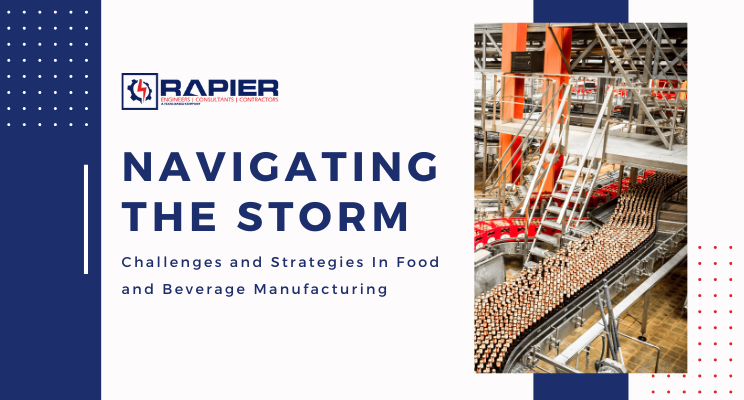Recently, the food and beverage manufacturing industry has found itself grappling with a significant challenge – the erosion of profit margins due to rising input and labor costs. As the world evolves, so do the dynamics within the industry, prompting companies to adapt and find innovative solutions to safeguard their profitability. In this article, we’ll explore the factors contributing to the deterioration of margins, and delve into the strategies that forward-thinking companies are employing to combat this complex issue.
The backbone of any successful food and beverage manufacturing operation is its ability to balance production costs with consumer demand and quality expectations. However, over the past few years, a convergence of factors has created a perfect storm, putting immense pressure on profit margins. Notably, the cost of raw materials, transportation, and energy has surged, and labor expenses have grown as well. Regulatory compliance and sustainability initiatives have added additional layers of complexity, further exacerbating the situation.
Innovative Strategies for Protecting Margins and Ensuring Long-Term Viability
- Operational Efficiency Enhancement: Businesses are employing advanced technologies, such as artificial intelligence and data analytics, to optimize production processes. By identifying inefficiencies and streamlining operations, companies can reduce waste, minimize downtime, and make better-informed decisions, ultimately leading to cost savings.
- Supply Chain Resilience: To mitigate the impact of supply chain disruptions and price fluctuations, companies are reevaluating their supplier relationships and diversifying sourcing options. Creating agile and resilient supply chains helps reduce the risks associated with unexpected cost spikes.
- Innovation and Product Diversification: Companies are continuously innovating their product offerings to cater to changing consumer preferences. By introducing new and differentiated products, businesses can tap into niche markets and potentially command premium prices, offsetting cost pressures.
- Sustainable Practices: Embracing sustainability not only aligns with consumer values but can also yield cost savings. Adopting eco-friendly practices, such as reducing energy consumption and waste, can lead to lower operating expenses while attracting environmentally conscious consumers.
- Labor Optimization: Automation and robotics are playing a pivotal role in reducing labor costs and increasing efficiency. By automating repetitive tasks, manufacturers can redeploy human resources to higher-value roles that require creativity and problem-solving skills.
- Strategic Pricing and Value Communication: Careful pricing strategies, coupled with effective communication of a product’s value proposition, allow companies to justify higher prices. Transparently conveying the quality, sourcing, and benefits of a product can justify premium pricing, bolstering margins.
- Collaboration and Partnerships: Collaborative efforts within the industry can lead to shared resources, knowledge, and best practices. By pooling insights and collectively addressing challenges, companies can find innovative solutions that benefit the entire sector.
The challenges facing the food and beverage manufacturing industry are undeniably daunting, yet they also present an opportunity for innovation and growth. While eroding margins may be a reality, companies that embrace change, adapt to new technologies, and prioritize sustainability and operational efficiency are not only weathering the storm but thriving in it. By strategically navigating these challenges, the industry can create a more resilient and prosperous future for all stakeholders involved.


